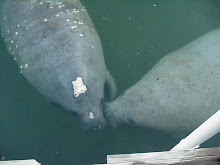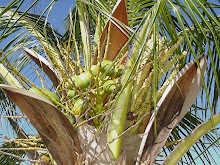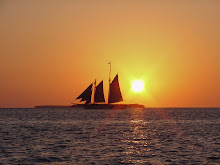The Colonel and I have been wanting to hike the trails at the site of Fort Center in the Fisheating Creek Wildlife Management Area (WMA). On Saturday, January 5th, we finally did just that. We were joined by my newly retired sister Jennifer and her husband Jim.
The weather that day was perfect for a 5-mile hike. It was sunny and there was just enough of a breeze to keep us comfortable and bug-free.
The first mile and a half of the hike is a long, straight trail with some covered information stations along the way.
The trail cuts through wet prairie and floodplain that is open to cattle grazing. We passed by a truck that was pulling a trailer that had wild pigs in cages. Roughly 500 wild pigs are captured in the WMA each year.
Thankfully we did not see any non-caged wild pigs as we hiked. We did see free-range cows though.
After the 1.5 mile walk, we entered the hardwood hammock and interpretive trail loop. The Spanish moss draped live oak trees and cabbage palms were plentiful. Interspersed among them were wild citrus trees.
We encountered wild grapefruit, tangerine, orange and lemon trees along the trail. These trees are thought to be remainders of the first citrus brought to the New World by the Spanish in the 1500's and are the oldest in Florida. We picked some fruit from a sample of each tree.
We tasted each fruit. We found the tangerines to be a bit sour and bitter. The oranges were good but the lemons and grapefruit were the best tasting. I am not a huge fan of grapefruit (I think it tastes like earwax...don't ask me how I know...just trust me) and I think the Ruby Red grapefruit is superior in taste to the white fleshed grapefruit. The wild grapefruit was white fleshed. We (including me) found it to be sweet and delicious.
We continued along the trail and veered towards the Fisheating Creek. The Seminole name for this creek is Thlothlopopka-Hatchee which means river where fish are eaten. The creek is between 40-50 miles long.
It was nearing lunchtime and we wanted to picnic along the creek. We encountered some cows as we neared the creek (we encountered their droppings everywhere and Jennifer and I recalled something our maternal grandfather used to tell us...do not step on a cowpat or it will cut your foot). We had anticipated having to sit upon the ground to eat our lunches but were pleasantly surprised when we spotted a picnic table situated under a moss-strewn oak tree. The picnic table was placed there by the Lakeport Florida Airboat Club. There was another table further on down the creek.
The Fort Center site at Fisheating Creek WMA is documented as possibly the first place in the eastern part of our continent where people grew corn. The area around Fisheating Creek was occupied by people of the Belle Glade Culture from as early as 1,000 BCE.
Fort Center is a complex of earthwork mounds, linear embankments, middens and circular ditches, and an artificial pond. In the above photograph, Jennifer and Jim were standing on mound number ten. The photograph below is of the artificial pond.
Image from Internet
The Fort Center complex is named for a blockhouse that was located at the site during the Second Seminole War (1835-1842) and named for U.S. Army Lt. J.P. Center. There are no longer any traces of the blockhouse. An interpretive panel showed what the fort may have looked like.
Dodging cowpats, we continued along the trail within the hardwood hammock until we once again joined the 1.5 mile trail we began our hike on.
The Colonel and I very much enjoyed finally making the hike at Fort Center. Sharing our hike with my sister and brother-in-law made it even more enjoyable! I just wish we could have filled a basket with the tasty citrus and brought it back with us.





























































We had a great time exploring with you. Some of the fruit was sweet but the companionship was sweeter.Thanks for saving this trip so we could enjoy it, too! Jenn
ReplyDelete